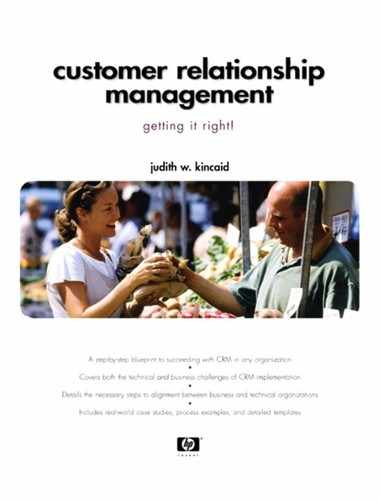11.3. Integrating Your Databases (The Information Gold Mine)
Now that we've built the model and dictionary that defines CRM data and have built the system, it's time to look at the match between the source system and our new database design and to think about adding data to our new system. CRM data is available from hundreds of sources. There are many data providers and contact list providers who make their lists available to direct marketers. But there is one source of CRM data that is better than any other – your own in-house systems.
Who knows your customers better than you do? A top consulting firm did a CRM assessment for XYZ not long ago; their conclusion was that what XYZ needed for a successful CRM program was to provide seamless treatment of customers supported by complete and well-maintained databases.
“The highest priority gaps to close center around data management of customer/prospect information and installed base information, since this data is the backbone of the recommended CRM initiatives. Given the importance of the customer contact list and installed base data to CRM, we believe that building a consolidated customer view should be top priority.”
Providing access to all the company's customer information is critical, but there are some significant issues surrounding integrating information from multiple sources. Most legacy customer data sources look nothing like the well-designed model we have planned. To successfully integrate information, we will analyze each source, identifying differences from the new model, and then transform the data to the new format. Information Technology will build a transformation program for each unique data source and run the data through this program on the way into the database.
Also, the web allows customers to look at the data we have about them; this raises significant issues of the quality of our legacy data and how much we want customers to see.
11.3.1. Integrating Data Sources
We can't spend much time discussing physical database content; there are just too many options and no single size fits all. But we must consider how we're going to get information from multiple sources (internal or external) into our new system. Data mapping is a critical tool for converting existing data to a new model and will be discussed in the information integration section of Chapter 16.
11.3.2. Source Data Quality
The Internet throws one very big monkey wrench into our data integration goal: the Internet allows customers to see the data we've collected about them. Our historical data collection processes (which still make up 80 percent or more of most companies' customer knowledge) were generally pretty casual about accuracy. Getting data shoved into the system was more important than getting it in right. (After all, program response rates were measured on number of responses, not the quality or usability of the information.) Remember, you ALWAYS get what you measure. We will learn more about both data mapping and data quality management, but for now our next step is to determine the process component of our project.
